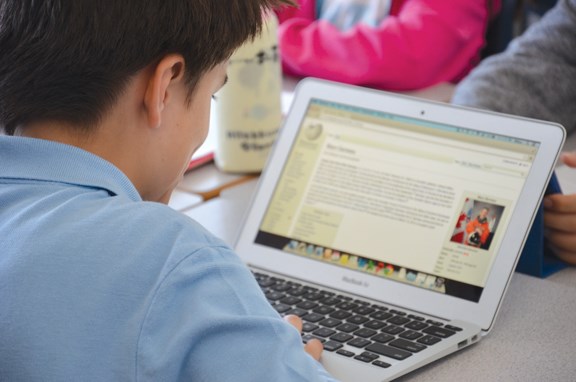This coming school year, it will be BYOD at West Vancouver Secondary.
Students will be encouraged to bring their own laptops to school as part of a broader program of using technology in classrooms.
The name of the new initiative is Bring Your Own Device (BYOD), and it's an approach that has been used in other school districts.
"The ability to use one's own device opens up learning beyond the walls of the classroom, and certainly beyond the Monday to Friday, 8:30 to 3:30 structure. We feel it is another step toward a more personalized, more flexible learning environment, and one that will prepare students for an ever-shifting future," explains Sean Nosek, director of instruction, technology and innovation for West Vancouver School District.
He says there are plans to expand BYOD to other West Vancouver schools.
However, aside from providing calendar apps and Word doc programs for typing homework, using technology in a meaningful way in classrooms is still an area of some discussion. There are also logistical challenges faced by public schools, such as the cost of providing technology for students who can't afford their own, infrastructure costs (such as installing wireless networks), and supplying teachers with devices so they can be in the mix.
In an era when many kids and teens already spend most of their out-of-school time online trolling social networks and perusing the internet, there is also concern by some that too much computer time will take away from more traditional roles of classroom teaching and social development elements of education.
"We're all aware that we don't want our students to have too much screen time, and I think our teachers are very aware of that, so while technology certainly has a key role to play it will never replace the sort of magic that is the face-to-face dialogue and interaction, which will continue to happen and be emphasized at school," says Nosek.
He explains that the discussion about technology in education circles is increasingly about blended learning. It's an approach in which schools try to emphasize the best of the face-to-face as well as the digital elements of learning.
"And that's always a dance, and I don't suggest that it looks the same in every classroom or that we have it down to an exact science or art yet, but I think striking that balance is the place that we're looking to get to," says Nosek.
Technology may also be used differently in primary and secondary levels. The biggest difference is that there can be more content control in the elementary level as there is typically one teacher with the same group of students for an entire school year. So depending on the curriculum being covered and the activities planned, it may be easier to include more thematic study and integrated learning than in a high school setting where students typically have several teachers per semester, notes Nosek.
With so much information available these days about the use of technology in classrooms, some parents may feel overwhelmed, as Nosek calls it "infowhelmed."
He recommends parents pay attention to what's happening at their child's school, ask questions, attend open houses and information sessions at the school, talk to teachers and check the school's website. This should give parents a good idea of what their child's school is doing with technology and how they can be a part of it.
Nosek, who was also a teacher and a high school principal, has two teens of his own and says he has seen first-hand how technology can be used in a positive way in schools, especially for organization and collaboration.
"What technology allows us to do with students or allows our students to do is to create and to consume and to connect, and those three things are huge for learning."
This story was originally published in the North Shore News special section called Back to Class, which focused on back-to-school topics.



